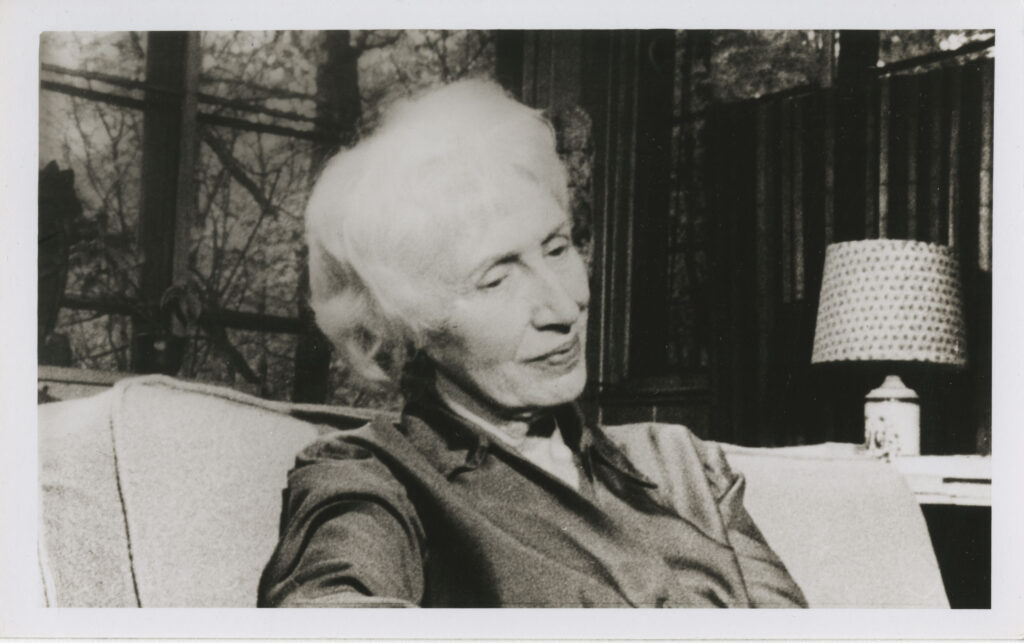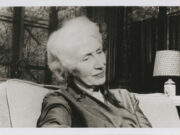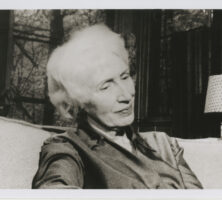No southerner was more outspoken in expressing moral indignation about the region’s injustices and inequities during the pre–civil rights era than the writer Lillian Smith, and in no work did she articulate that indignation more fully than in Killers of the Dream. First published in 1949, and revised and expanded in 1961, it is arguably the most influential and enduring of the many writings this self-described “tortured southern liberal” produced over her three-decade career.

Courtesy of Hargrett Rare Book and Manuscript Library, University of Georgia Libraries.
Background and Reception
Smith had already established a national reputation as an unrelenting critic of southern racism with the publication of her controversial novel Strange Fruit in 1944 as well as in numerous essays and articles. In the wake of Strange Fruit’s success, she decided to elaborate on its themes in nonfiction and in 1947 began writing the book that would become Killers of the Dream. The title alludes to those human forces—racism, violence, poverty, ignorance, and oppression—that destroy mankind’s “dreams” of freedom and human dignity.
Upon its publication by W. W. Norton in the fall of 1949, Killers of the Dream garnered widely varying reactions. Enthusiastic reviews appeared in the New York and Boston press, whose critics admired Smith’s hard-hitting and insightful analysis as well as the sheer courage of a southerner in publishing so unsparing an indictment of her native region. Far more of the response was hostile, however, and criticized the book’s poor organization, repetitious and elliptical arguments, and strident tone.
Smith was most disappointed, even angered, by the reaction of other so-called southern liberals to the book. Atlanta
The Book
Killers of the Dream consists of a mix of genres and reads more like a series of disparate essays than like a coherent narrative. Although Smith once labeled the work a memoir, its autobiographical passages are fleeting and anecdotal. Killers also consists of sociological and historical analysis, editorial commentary, and allegory. Smith’s interest in Jim Crow and its effects were more psychological than political. She later stated that she wrote the book “because I had to find out what life in a segregated culture had done to me, one person.” She drew from certain traumas of her own childhood to examine the psyches of children, Black and white, and how their early inculcation into a racially oppressive society warped their sense of values and stifled any prospects of challenging the social and economic shortcomings of their elders. Her opening sentence— “Even its children knew that the South was in trouble”—suggests her preoccupation not only with youth but also with guilt and shame, both individual and collective, all of which remain constant themes throughout the book.
Smith was explicit in her attacks on all manifestations of southern racism, including the Ku Klux Klan, lynch mobs, sharecropping,and segregation. She was also interested in gender and class oppression as by-products of racial attitudes and was particularly effective in probing the effects of race on southern womanhood and on the exploitation of poor whites. In a chapter called “Three Ghost Stories,” Smith analyzes the extent to which relationships between white men and Black women, white fathers and their mulatto children, and white children and their Black nurses had long haunted southern society. In a parable entitled “Two Men and a Bargain,” she illustrates the conscious conspiracy between Mr. Rich White and Mr. Poor White to subjugate Blacks economically by shutting them out of lowly employment opportunities, thus allowing a fuller exploitation of a poor white labor force—who were grateful not to have to compete with Blacks for jobs.
Revised Edition and Legacy
A book too far ahead of its time in 1949 to resonate with most readers, Killers of the Dream had become far more relevant by 1961, as Americans sought to understand a South then in the midst of a social and political revolution. Smith persuaded her publisher to issue a revised edition of the book to take advantage of the national and international attention focused on the region during the civil rights movement. She rewrote the book’s last two chapters to address the movement in progress and its implications for the South’s future. She also wrote a lengthy foreword in which she explains the new relevance of the book’s original message and condemns the continued apathy of many well-meaning Americans to the racial injustices of the South, which she found much more disturbing than the fanatical resistance of die-hard segregationists.
Smith was gratified by the far more positive reception of the revised edition of Killers and took full advantage of the celebrity status it brought her among anew generation of college students and other young activists in the movement. The Black college students who staged the first sit-in in Greensboro, North Carolina, in 1960 stated that they were most influenced by the ideas of the economist and sociologist Gunnar Myrdal, the leader of India and proponent of nonviolent protest Mahatma Gandhi, and Smith.
Smith succumbed to cancer in 1966; thus she did not live long enough to see Killers of the Dream emerge as a classic of twentieth-century southern literature. The work continues to be standard reading in college courses covering southern history, race relations, and women’s studies.






